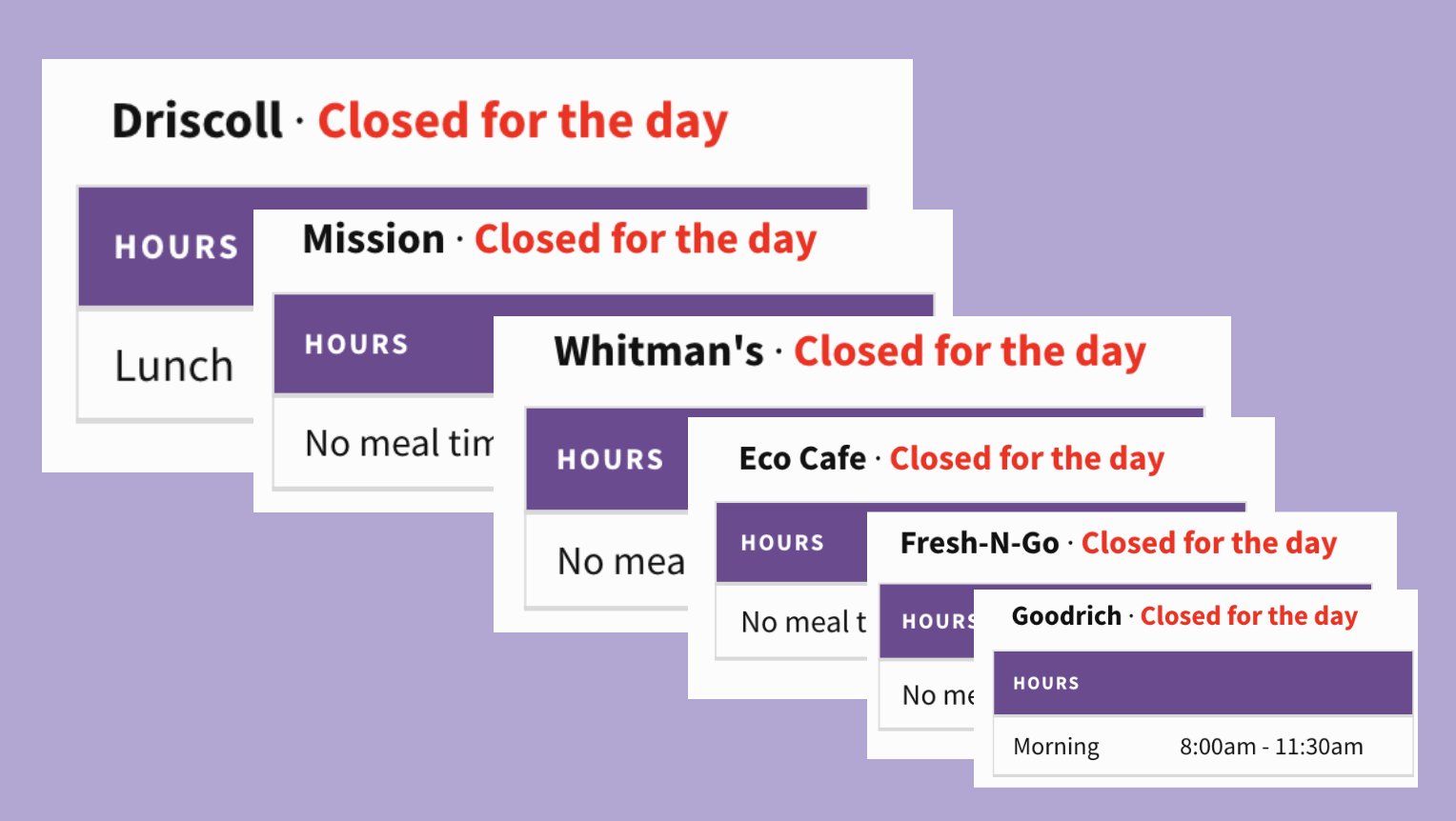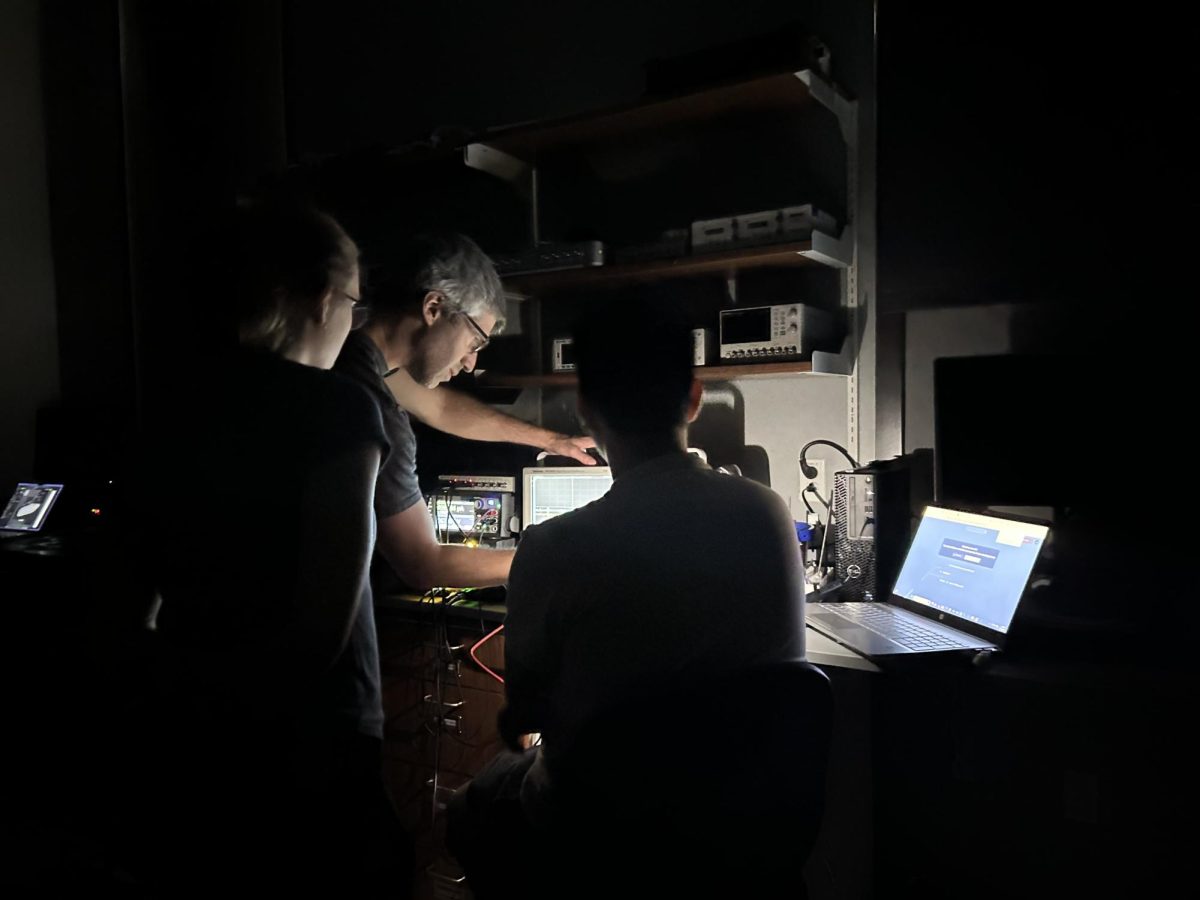
From stalking classmates to rating professors to finding love, Williams Students Online (WSO) is integral to the student experience at the College. Though WSO’s analytics report more than 300,000 visits to its website since January, it is maintained and upgraded by a board of just three students. The Record spoke with WSO President Nathan Vosburg ’27 and Vice President Nathaniel Flores ’27 — the third member, Charlie Tharas ’27, is studying away — for a closer look at how the site operates and how it has changed this year.
What happened to the dining menus?
Those who remember checking WSO for dining hall menus and hours in years past may have been disappointed to find that information missing from the site and app this year. Flores said that the service broke on Sept. 7 when Dining Services launched a new menu site.
“[Dining] had a service for us called NetNutrition … it had an API [Application Programming Interface] which we could use to get dining data from them: hours, what’s on the menu, allergens for those specific items,” he said. “When they moved to the new website, they didn’t take down NetNutrition, they just deleted our access to see the API.”
Flores said that the WSO board has made attempts to get dining information back on the app but has been unsuccessful. He emphasized that he has found it difficult to communicate with dining management. “You can go talk to the dining employees you see at the dining hall, but they don’t control what’s going on in the upper echelons of dining,” he said.
What’s happening on Thursday?
The board plans to take WSO offline on Thursday to upgrade their server. “The hardware is super old,” Flores said. “It’s from 2013-ish and it’s super outdated… Sometimes the server will have really long latency times because there are too many requests at the same time.”
To address this, Flores said that WSO is replacing the current hardware with a new server that will function in the same way. “[Latency is] something that can just be fixed by literally throwing more money at the problem,” he added. “So that’s exactly what we did.”
“That move is something I want to be really delicate about, because if we make any mistakes, it’s going to fry everyone’s Listserv,” he continued. “I don’t want to break it without telling people in advance.”
Flores said that WSO isn’t responsible for paying for the upgrades. “We just asked OIT [Office for Information Technology] nicely,” he said. “OIT’s amazing,” Vosburg added.
During the server migration, WSO will also fix security vulnerabilities in its Listserv service, Flores said.
Can WSO see who I’m looking up?
Flores and Vosburg said they can’t, but since January, they’ve been collecting limited analytics on user activity.
“Whenever anyone clicks on any page on the site, it ticks up a counter by one,” Flores said. Each page on WSO’s Facebook has its own counter. “A user is unique if the IP address and the device and the login haven’t changed,” he said. “So basically, refreshing the page 1,000 times does not change your rank, but logging in from a new device with the same user and clicking on the page again works.”
This means that while WSO board members can’t tell who’s been looking you up, they can see roughly how many people have viewed your profile. WSO shared some of this data with the Record.
Between the beginning of last Winter Study and last week, the most-visited profile was viewed 399 times. However, the median profile, including faculty and staff, was viewed six times. Many of the top ten most-viewed profiles were frequent posters on the site’s boards.
In addition to page views, WSO collects data on the site’s busiest times. “In general, the busiest times for WSO are when big events happen on campus,” Flores said. “But also Saturday mornings between, like, 12 to 2 a.m.”
“My theory, I have no data to back this up … but I think people are going to parties — they meet people in a drunken haze, and then they kind of sober up around 12 to 2, and they’re like, ‘I gotta go look up who that person was,’” Flores added.








